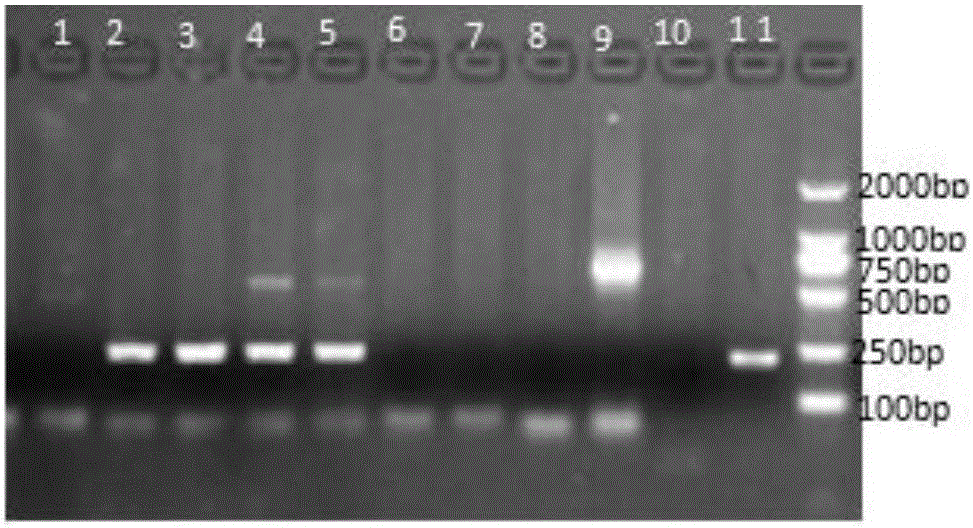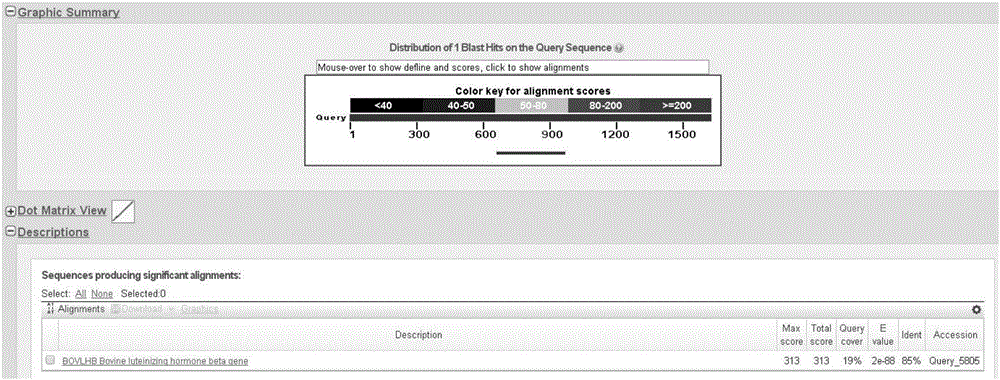Quantitative determination method for donkey and bovine derived ingredients in colla corii asini liquid semi-finished product or finished product, composition and kit
A quantitative detection method and quantitative detection technology, applied in the field of molecular biology, can solve problems such as inability to quantify, cannot know the proportion of adulteration, and different copy numbers, and achieve the effect of improving the success rate of detection
- Summary
- Abstract
- Description
- Claims
- Application Information
AI Technical Summary
Problems solved by technology
Method used
Image
Examples
Embodiment 1
[0098] (1) DNA extraction: the invention provides a method for sampling donkey-hide gelatin. According to the modern processing process of donkey-hide gelatin, 200ml (100g) of donkey-hide gelatin is sampled after the peeling, glue separation, foam removal and impurity extraction, concentration stage, gelation stage and the finished donkey-hide gelatin are extracted by patent CN.201410317118. technology to extract nucleic acid DNA. Experiments have proved that the nucleic acid DNA extracted from donkey-hide gelatin after peeling, gelatin separation stage, before double effect and before concentration is relatively complete. Finished donkey-hide gelatin) DNA has become a diffuse band, which has been seriously degraded compared with the previous period, see figure 1 , DNA was extracted from the sample after concentration and during the period of adding excipients and gelatin, and amplified with primer pairs of different lengths of amplification fragments. The agarose gel electro...
Embodiment 2
[0109] Example 2 specificity verification
[0110] Using the designed primers and probes, the total genomic DNA of cattle, pigs, horses, donkeys, mules, goats, sheep, rabbits, fish, chickens, ducks, dogs, camels, mink, and foxes were used as templates to carry out Real-time fluorescent quantitative PCR detection to verify the specificity of primers and probes. The results are shown in Table 3, and the results show that the designed primers and probes of the present invention have strong specificity.
[0111] Table 3 specificity verification experiment
[0112]
[0113]
Embodiment 3
[0114] Embodiment 3 Sensitivity experiment
[0115] According to mixing 1‰, 5‰, 1%, 5%, 10%, 20%, 50% cowhide mixing (mass ratio) in donkey skin, extract DNA, carry out real-time fluorescent quantitative PCR detection, evaluate the detection of the present invention limit, see description Figure 9 , the results show that the quantitative detection limit of the method is 0.5%, indicating that the method provided by the present invention has very high sensitivity.
PUM
 Login to View More
Login to View More Abstract
Description
Claims
Application Information
 Login to View More
Login to View More - R&D
- Intellectual Property
- Life Sciences
- Materials
- Tech Scout
- Unparalleled Data Quality
- Higher Quality Content
- 60% Fewer Hallucinations
Browse by: Latest US Patents, China's latest patents, Technical Efficacy Thesaurus, Application Domain, Technology Topic, Popular Technical Reports.
© 2025 PatSnap. All rights reserved.Legal|Privacy policy|Modern Slavery Act Transparency Statement|Sitemap|About US| Contact US: help@patsnap.com



